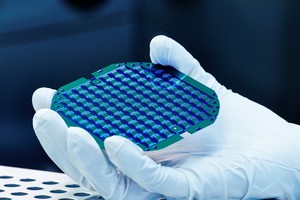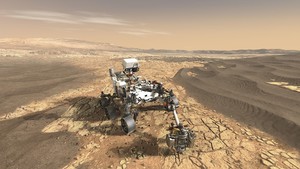

|
Edward Lowton
Editor |


|
| Home> | Plant, Process & Control | >Sensors and instrumentation | >Sensors chosen for mission to Mars |
Sensors chosen for mission to Mars
05 February 2018
Vaisala's pressure and humidity sensors will soon be on their way to space, participating in NASA's next mission to Mars.

Finnish Meteorological Institute (FMI) is among the partners providing measurement equipment for the new Mars 2020 Rover. The pressure and humidity measurement devices are based on Vaisala's sensor technology and are similar to the ones already delivered to Mars on the first Curiosity Rover. In addition, Mars 2020 Rover will carry Vaisala's newer and more advanced pressure and humidity sensor heads.
The Mars 2020 mission is part of NASA's Mars Exploration Program and it aims to gather more knowledge on Martian atmosphere and other environmental conditions. The Mars 2020 Rover will be equipped with Vaisala BAROCAP and HUMICAP pressure and humidity sensors. The sensors are part of instrumentation designed by the FMI, and they will be used to gather accurate readings of pressure and humidity in the extreme environmental conditions of the Martian atmosphere. The new mission equipment will complement the already existing measurement tools on Mars taken there by Curiosity in 2012.
While working on Mars, Curiosity and Mars 2020 Rover will create a small-scale observation network which anticipates the extensive MetNet Observation Network planned on Mars for the future. "We are very happy and proud that Vaisala's equipment has again been selected as an affiliate for space exploration that will help us understand the world around us. Accurate and reliable measurements are in the core of this understanding. Vaisala's strength is exactly that: Our sensors function reliably and accurately also in the extreme conditions on Mars", says Liisa Åström, Vice President, Products and Systems of Vaisala. This is not the first nor the second occasion on which Vaisala technology has gone into space.
Vaisala's history of providing sensors for space explorations dates back to the 1950s, when it converted the frequency of a radio theodolite to help track Sputnik I, the world's first artificial satellite. Since then, Vaisala has been involved in a number of fascinating missions, providing technology to help understand the universe. Since 1992, Vaisala's carbon dioxide, humidity, and temperature sensors have been used to control life science experiments both onboard space shuttle flights and at the International Space Station. Vaisala's pressure sensors were also part of NASA's Cassini mission which was launched in 1997, and in 2005 achieved the first ever landing on a moon in the outer solar system: Titan, the largest moon of Saturn. This is one of the most ambitious missions ever launched into space and is still ongoing. Vaisala's technology is used in space exploration due to its extreme stability, which is vital due to the extreme environmental conditions in space. Vaisala's sensors are able to withstand extreme heat and cold and are highly tolerant of shaking and vibration of the space travel.
- Dew point role
- Monitor for power transformers
- Transmitters for demand-controlled ventilation
- CO2 wall sensors
- Assessing transformer condition
- 3-in-1 biogas instrument
- CO2 probes monitor stores' natural refrigeration systems
- More value from waste
- Measurement role
- Vaisala launches online monitor for transformer dissolved gas analysis



















